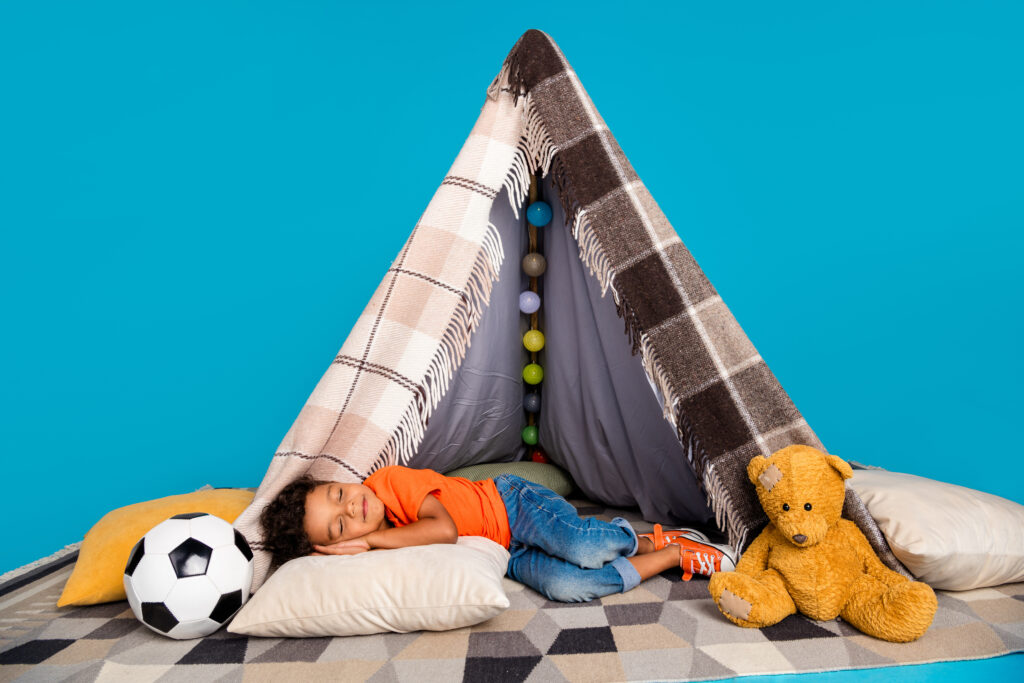Bedtime and Screen Time: Resetting Summer Habits for a Healthier and Smarter 2025

Summer days stretch long and lazy, filled with late nights, extra screen time, and flexible routines.
Bedtime quickly shifts when September rolls around, as kids need to adjust gears. Suddenly, mornings start earlier, attention spans are tested in classrooms, and healthy sleep habits become essential again. The transition back to school is the perfect time to reset two key routines: bedtime and screen time.
Why bedtime matters more than ever
Sleep isn’t just rest—it’s the fuel kids need for memory, focus, and emotional regulation. Research consistently shows that children who get adequate sleep perform better academically and have fewer behavior challenges. The American Academy of Pediatrics recommends that school-aged children get 9–12 hours of sleep per night (Paruthi et al., 2016).
Yet summer often disrupts those rhythms. Later sunsets, vacations, and relaxed household schedules push bedtimes back. By the time school starts, many kids are sleep-deprived without realizing it. A lack of sleep affects not only energy but also the ability to learn and manage emotions (Beattie et al., 2015).
Resetting sleep routines can start gradually. Parents can move bedtime earlier by 15 minutes every night until the desired school-night schedule is reached. Adding calming rituals—like reading, quiet music, or gentle stretching—signals to the brain that it’s time to wind down.
💡 Language connection: Make bedtime routines bilingual. Parents can read short English storybooks, nursery rhymes, or even riddles before lights out. This builds vocabulary in a calm, cozy setting, helping kids associate language learning with comfort.
Why screen time needs a reset too
Screens sneak into every corner of daily life—TV shows, gaming, tablets, and phones. During summer, kids may spend hours more on screens than during the school year. But heavy screen use before bed can interfere with melatonin production and delay sleep (Hale & Guan, 2015).
Excessive screen time is also linked with lower academic performance and reduced physical activity. The Canadian Paediatric Society recommends no more than 2 hours of recreational screen time per day for school-aged children.
As school begins, parents can reset expectations by setting clear screen limits: no screens during meals, no screens one hour before bed, and screen-free bedrooms. This not only supports healthier sleep but also gives families more chances to connect.
💡 Language connection: Instead of winding down with TV, try English audiobooks, podcasts for kids, or even gentle background songs. Another fun idea? Play family word games before bed, like “I Spy in English” or “Name 5 Animals That Start with B.” These swaps keep evenings screen-light and language-rich.
Practical tips to make the reset stick
- Create consistency. Kids thrive on predictability. Aim for the same bedtime and wake-up time—even on weekends.
- Build a wind-down routine. Reading, warm baths, and dim lighting help kids transition from playtime to sleep.
- Use tech tools wisely. Many devices allow parents to set screen limits or enable nighttime filters.
- Model balance. Parents who put their own phones aside at night show kids that screen-free evenings are possible—and enjoyable.
The bigger picture: healthier kids, happier families
Resetting bedtime and screen time routines doesn’t just prepare children for school—it strengthens family life. Kids who are well-rested and less screen-dependent are more attentive, more resilient, and more ready to learn. Families also gain more shared time for talking, laughing, and growing together.
💡 Language bonus: Incorporating English (or any second language) into bedtime makes routines doubly valuable. Whether it’s through stories, songs, or simple conversation, children not only recharge their brains for school—they also expand their ability to express themselves.
🌟 For more engaging learning ideas, visit our blog weekly! We share creative activities, language tips, and more to make learning exciting. Stay connected with the latest posts on the Langmobile blog! And don’t forget to check out awesome songs on our Apple Music, YouTube, and Spotify pages to help with your language learning!
References
- Paruthi, S., Brooks, L. J., D’Ambrosio, C., Hall, W. A., Kotagal, S., Lloyd, R. M., … & Wise, M. S. (2016). Recommended amount of sleep for pediatric populations: A consensus statement of the American Academy of Sleep Medicine. Journal of Clinical Sleep Medicine, 12(6), 785–786. Link
- Beattie, L., Kyle, S. D., Espie, C. A., & Biello, S. M. (2015). Social interactions, emotion, and sleep: A systematic review and research agenda. Sleep Medicine Reviews, 24, 83–100. Link
- Hale, L., & Guan, S. (2015). Screen time and sleep among school-aged children and adolescents: A systematic literature review. Sleep Medicine Reviews, 21, 50–58. Link

